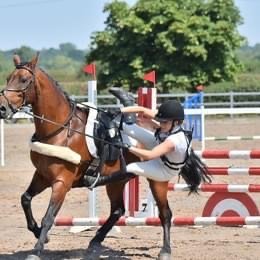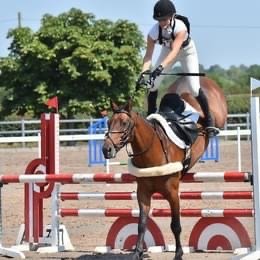ycbm
Overwhelmed
This right except it can be Three quarters and that never nice .
Op one thing I did a lot when I was doing stuff is to put a plank on the ground and then another random plank further down the school.
The distance does not matter .
You canter between the two and count the strides you find the easy number where you just meet the pole comfortably say it’s it’s four strides next time ride a little more energy into the canter and a longer stride and do three and then back to first number then add another stride in and do five on a young horse you will need to get them able to canter easily to one pole first out of slightly different canters .It helps sometimes to have a person on the ground to adjust the second pole to the easy distance for a young or weak horse .
This is an exercise that helps you develop the feel for the best canter you need for jumping one that’s got the energy and balance for the horse to be able to adjust its stride .
The horse develops better eye to hoof coordination and begins to learn about the roll of impulsion in making life easy .
Planks are best because they don’t roll if it goes wrong .
This a great thing to do when you have been away from jumping a while .
This is a great exercise. At a clinic I once watched Geoff Billington put 16 strides in a 4 stride related distance, on a horse he'd only just met. He had us all doing what you describe.


